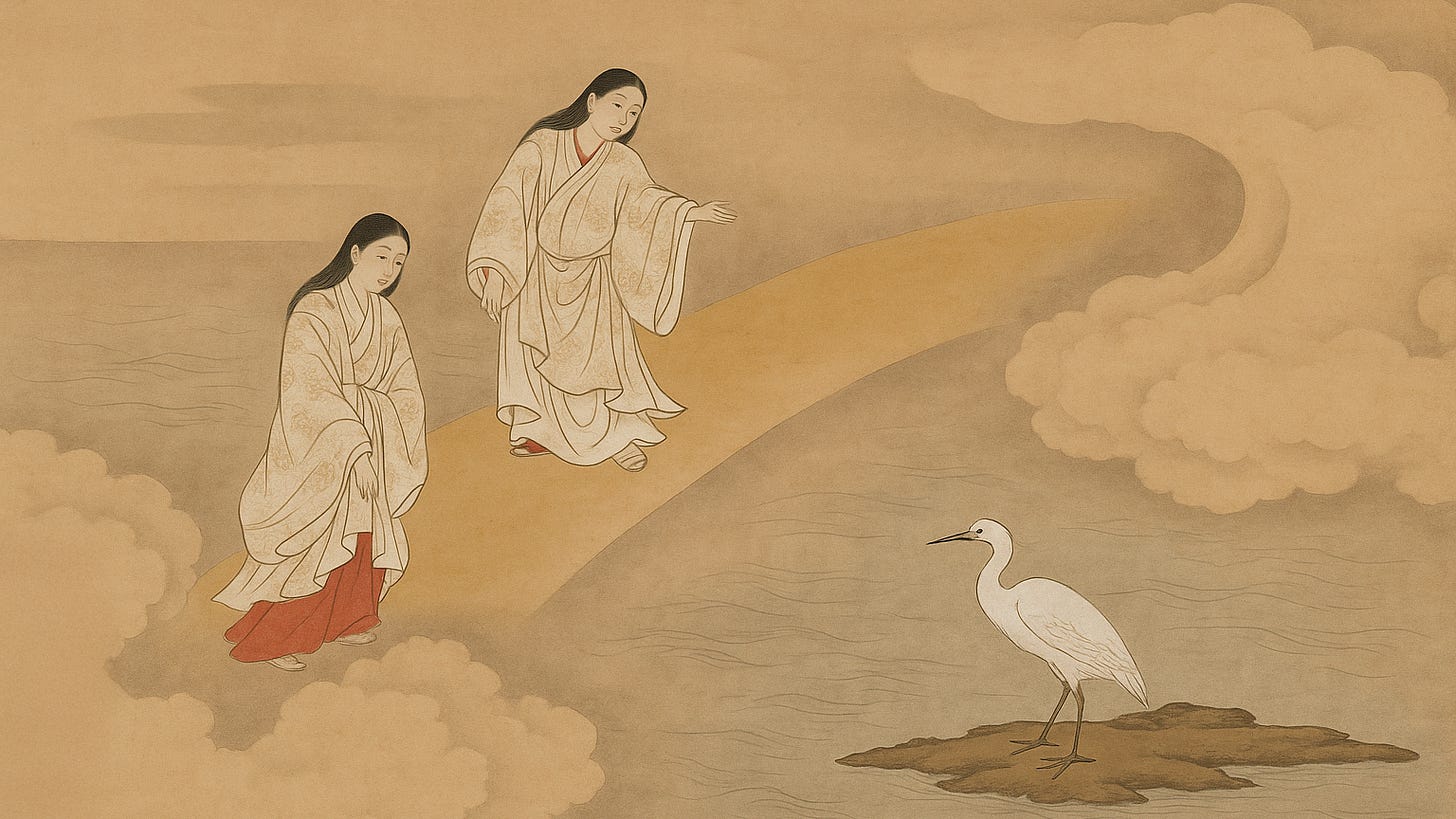Ancient Japanese myths often contain mysterious episodes in which kami leave this world never to return. These tales of “kami who depart permanently” (去る神) stand in contrast to the “visiting kami” (Raihōshin, 来訪神), which will be explored in a separate article, representing deities that periodically return. Understanding these departing kami first deepens our grasp of the significant ancient Japanese concept of “visiting kami.” But why did ancient people depict this motif of “kami departing”?
Behind these narratives lies a distinct ancient Japanese religious perspective concerning the relationships between kami and other worlds, such as Tokoyo (常世, the eternal land) and Yomi (黄泉, the land of the dead), as well as the distance between kami and the human world. This article examines several representative myths of “kami who never return” recorded in the Kojiki (712) and the Nihon Shoki (720) and explores their meanings.
The most famous among these myths involves Izanami from Japan’s creation myth known as “Kuniumi (国生み, Birth of the Country).” Izanami died giving birth to the fire kami (Hi-no-kami) and subsequently traveled to Yomi-no-kuni (黄泉の国, the land of the dead). Izanami’s departure deeply grieved her husband Izanagi, who followed her to Yomi, pleading, “The country-making is not finished yet; let’s return together.” However, Izanami replied, “I have eaten the food of Yomi and can no longer return,” promising to consult with the kami of Yomi regarding whether she could leave, before vanishing. Ultimately, Izanami never returned to the living world, and the two kami never reunited.
This myth symbolizes the ancient Japanese taboo that “once you eat the food of Yomi, you cannot return,” illustrating that once someone enters the land of the dead, returning to the living world is impossible. Izanami literally became the first “kami who never returned,” thereafter remaining in the underworld as “Yomotsu-Ōkami (黄泉津大神).” This complex narrative, vividly depicting the boundary between life and death, can be seen as humanity’s earliest recognition of death’s irreversibility and represents a solemn worldview that “even kami cannot return once they become dead.”



